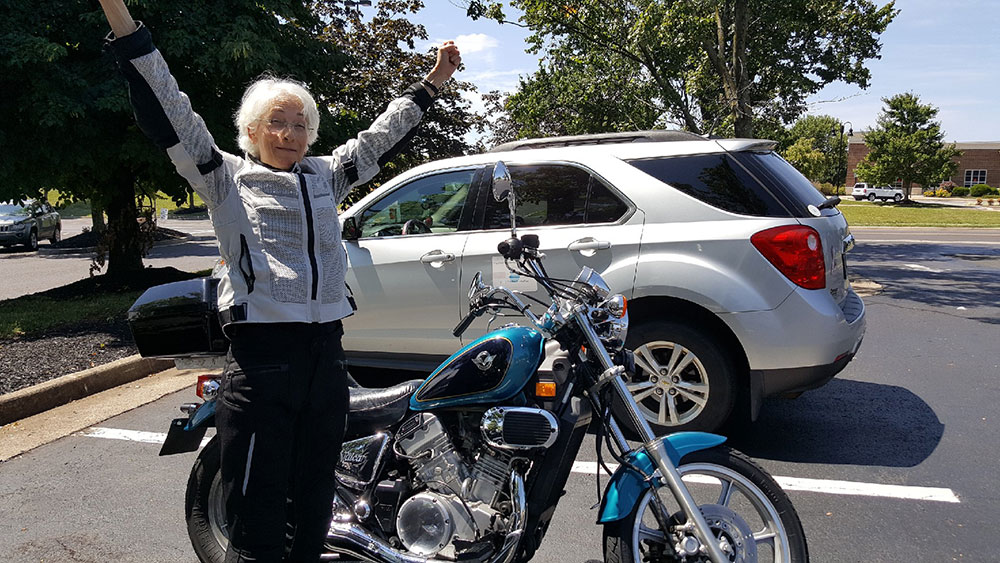American Motorcyclist January 2018
Member Letters
Letter Of The Month: Women Riders

Letter Of The Month: Women Riders
As a new rider, and a new AMA member, I want to thank the AMA editors and contributing writers for including so many women riders in the November 2017 issue of American Motorcyclist—from Wendy Crockett, long distance rider, to AMA member profile Lisa Golubiewski, to Bonnie Gerald’s Tiny Touring.
It makes me feel less alone to know about these women’s different approaches to, and experiences, riding. Too often I am the lone female rider in a group; the other women are riding pillion.
If this is typical of your publication, keep up the good work! If this is new, a huge thank you to help you realize what the inclusion does to support and bolster the riding experience of other women.
Linda Baskerville | Vienna, Va.
A Hall Of Fame Thanks
As a newly inducted member of the AMA Motorcycle Hall of Fame, I want to express my gratitude to the members of the AMA, AMA Life Members and Hall of Famers who voted to include me in this august collection of motorcycle enthusiasts.
I also want to thank the organizers of the event, and those who participated in the ceremony—Ken Ford, Cris Sommer-Simmons, Laurette Nicoll and Perry King.
As my 58th year of motorcycle riding transitions into my 59th, this award comes at a time of reflection on my very eclectic motorcycle career, and during a transition as a Grand Rider that will see me riding for many years to come. Being included in that group of amazing motorcyclists on stage at the end of the evening, for me, is one for the record books.
Thank you to everyone.
Peter Starr | AMA Motorcycle Hall of Famer
Position Is Everything
It’s sad that when we take pictures of our beloved AMA Hall of Fame motorcycles that we can’t put them in the middle of the magazine, where one can remove the suitable-for-framing classic bike with only a couple of minute staple holes in it.
Joe Acampora | Pickens, S.C.
So right you are, Joe. We hope by now you’ve noticed that we made the move for the December issue—and have for this issue, as well. Alternatively, if you would like all your glossy beauty shots in one place, consider a 2018 AMA Motorcycle Hall of Fame calendar. Every penny of the proceeds goes to the 501(c)(3) foundation that supports the Hall of Fame. You can buy one at www.americanmotorcyclist.com > Shop.
Image Matters
On a trip home form Lansing, Mich., to Warren on Interstate 96 on Oct. 26, I had two encounters with dangerous riding.
The first time, two sportbikes flew by me on the right (I was in the center lane), cut in front of me, and continued to weave in traffic until they were out of my sight.
The second was much closer. I had passed a vehicle driving in the right lane. When I decided I was clear, I put on my turn signal and looked over my right shoulder to make sure. Just as I turned my head, I caught the sound of a single sportbike that flew by me so close it “took my breath away.”
This is not an uncommon experience for me. Besides the obvious danger, what does this type of riding say to our four-wheel-vehicle driving friends? Are we all trying to earn their respect and a place on the roadways with them? It doesn’t seem to be the case in my experience.
Gary Stroup | Warren, Mich.
Need More Data
Jim Witters’ article about motorcycle crash causation studies in the November issue (“Understanding the Crash Cycle”) noted a number of findings about the licensing and training of those who crashed.
Mike Sayre, AMA government relations manager, is quoted as saying, “these findings support the AMA position that motorcycle safety programs that promote licensing and testing can further reduce the number of motorcycle crashes.”
I am all for more training and even graduated licensing, but from the data presented, you cannot draw any valid conclusions about licensing or training effectiveness unless you know something about the licensing and training of all riders—those who crashed and those who didn’t. The article states that “only 8 percent of riders who crashed had taken a course for experienced riders.” But if only 7% of all riders have taken such courses, the data would indicate that they are more likely to crash.
My question is, what do we know about those rates for riders overall?
John Kruse | Evergreen, Colo.
Thanks for the note, John. Mike Sayre’s comment referred to a combination of the all statistics under the “Training and Experience” heading in the story. This study did not address those who didn’t crash or make comparisons to the riding population as a whole. It sought causes for the crashes that occurred. That said, additional research is needed to further our understanding of the relationship of training to crash prevention.
Celebrating 66
John Skinner, former AMA National No. 66, turns 66 this year, Nov. 18 to be exact. This is a photo of him made in 1972 on his 1968 Triumph 750. The oldest trophy he can find was from Oct. 3, 1963, so he has been racing for a while!
Kathy Skinner | Waverly, Ala.
New Option
I enjoyed “Tiny Touring” (November issue) by Bonnie Gerald—very interesting. It sounds appealing. I am 67 and retired. I now have more time to enjoy the ride. Plus, I like the idea of becoming a “minimalist” traveler, 70 mpg and taking back roads—gravel or not.
Kathy Thornton | Pickens, S.C.
